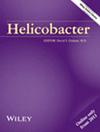Overall and Stratified Accuracies of H. pylori Serology Testing: A Multicenter Study of 8497 Screening-Naïve Adults
Abstract
Background
Population-based Helicobacter pylori screening is a promising strategy for gastric cancer prevention in high-prevalence regions. Although serology is recommended for treatment-naïve individuals, its accuracy in large-scale screening remains uncertain. This multicenter study evaluated serology against biopsy-based tests and assessed the influence of age and atrophic status to inform stratified screening policies.
Materials and Methods
In this multicenter diagnostic study, 8497 treatment-naïve adults undergoing upper endoscopy across nine hospitals in Taiwan were tested for H. pylori using serology, rapid urease test (RUT), histology, and culture. Serum pepsinogen I and II levels were measured to define serological atrophic gastritis (AG). Diagnostic performance was assessed against a composite reference standard (≥ 2 positive results among RUT, histology, and culture), with subgroup analyses by age and AG status.
Results
Serology showed a sensitivity of 94.5% (95% CI: 93.7–95.4) and specificity of 86.0% (95% CI: 85.0–87.0), with a diagnostic odds ratio (DOR) of 106.4. RUT, histology, and culture had higher specificities (97.1%, 94.3%, and 98.2%, respectively) but lower sensitivities (88.6%, 92.3%, and 90.2%, respectively). In individuals aged ≤ 45 years, serology demonstrated 95.2% sensitivity, 93.1% specificity, and a DOR of 268.9 (95% CI: 183.4–394.3). Among participants with AG, serologic specificity declined to 62.4% (95% CI: 53.3–71.5) versus 87.2% (95% CI: 86.0–88.5) in those without AG. The overall negative likelihood ratio was 0.06, and 0.05 among younger adults.
Conclusions
Serology is an accurate, non-invasive tool for H. pylori detection in younger, treatment-naïve adults without gastric atrophy in high-prevalence regions. In older individuals or those with atrophic gastritis, confirmatory testing is warranted, supporting age-atrophy–based algorithms to optimize screening strategies.

 求助内容:
求助内容: 应助结果提醒方式:
应助结果提醒方式:


